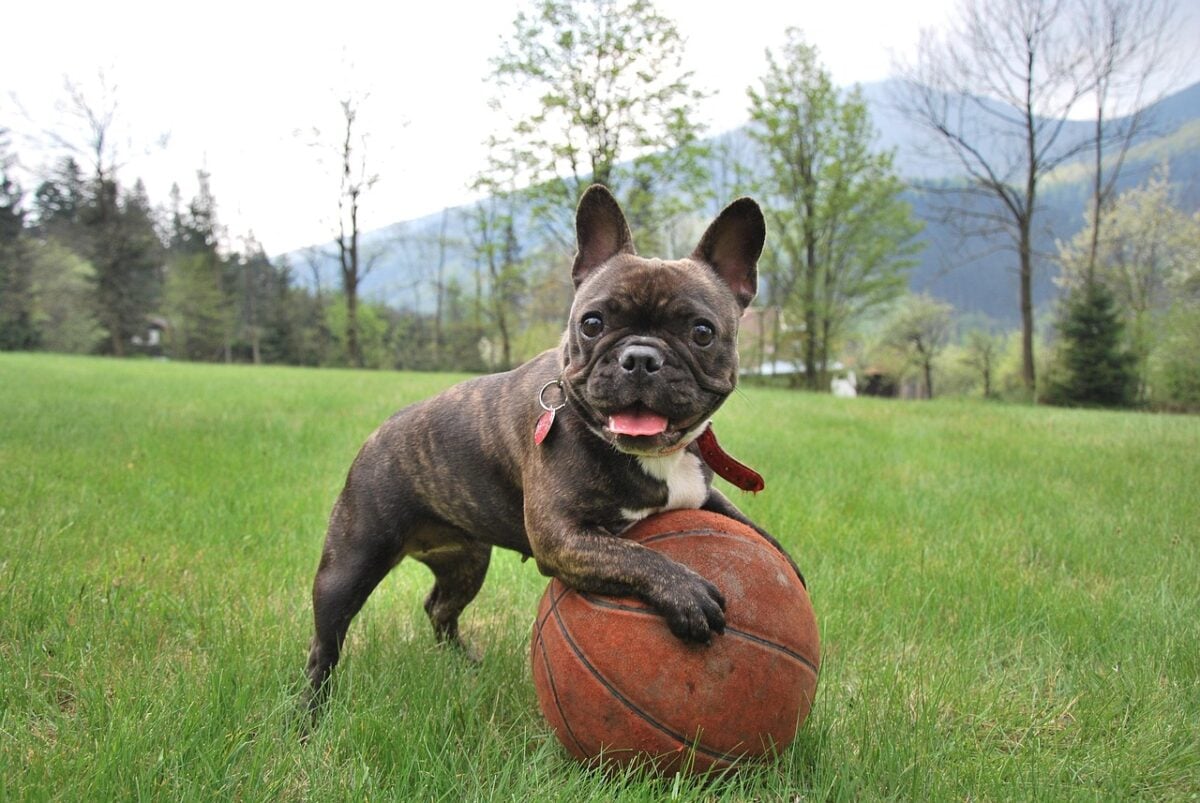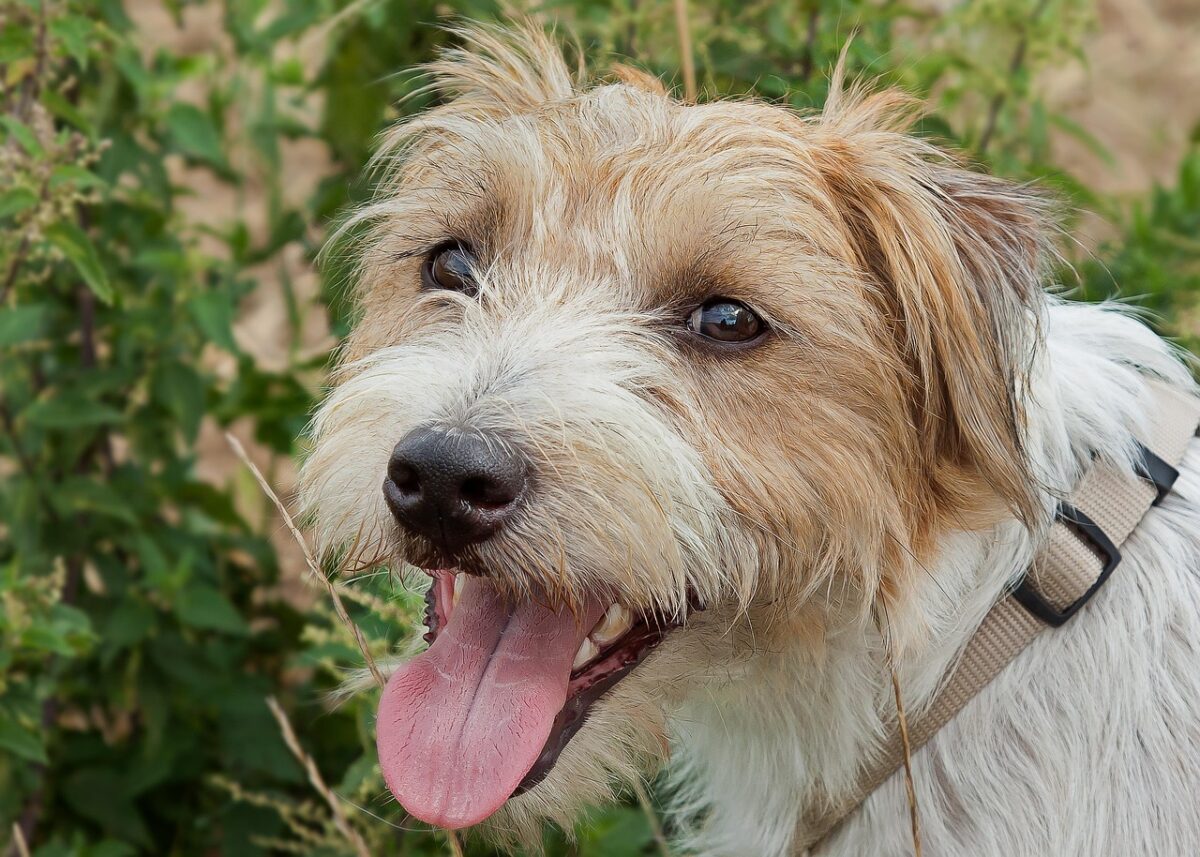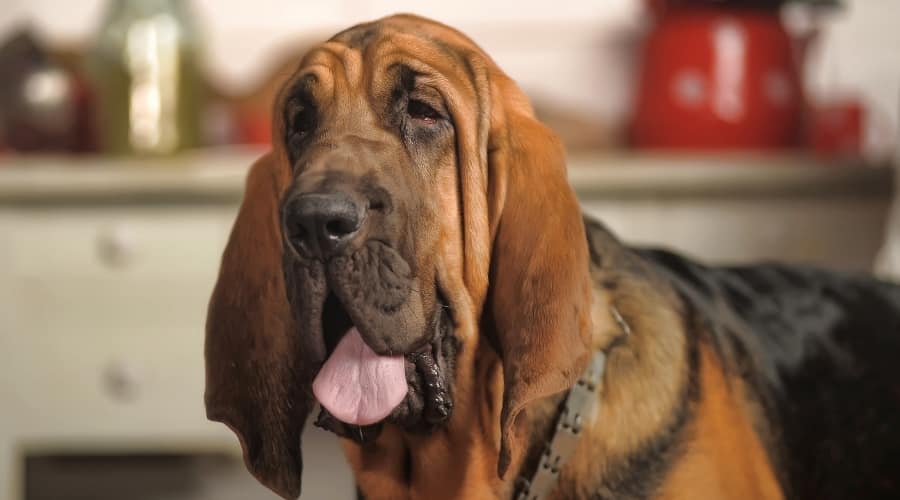No Tail? No Problem. Meet 18 Adorable Dog Breeds That Skip The Wag
When you purchase through links on our site, we may earn a commission. Here’s how it works.
Some dogs wag differently — or barely wag at all.
Table of Contents
A select few are born with naturally short or missing tails, giving them a look that’s as striking as it is mysterious. These aren’t the result of grooming trends or old-school docking practices; they’re the product of genetics at work.
These stumpy-tailed dog breeds are living proof that evolution has a playful side. Their tails (or lack thereof) tell a fascinating story about inheritance, adaptation, and a little canine quirkiness.
So what’s really behind dogs without tails, and how did this unusual trait appear in certain breeds?
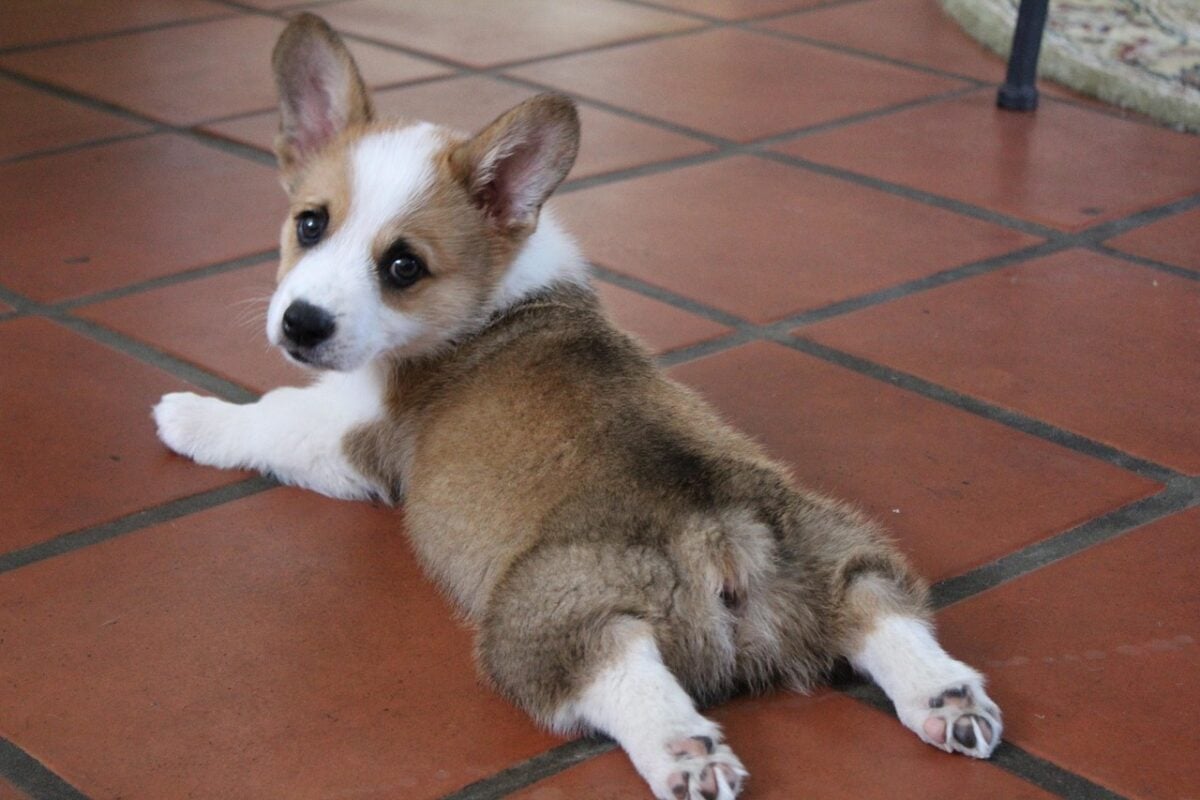
Nature’s Shortcut: Why Some Dogs Are Born Bobtailed
Stumpy-tailed dogs are pups born with naturally short tails, known as bobtails.
In naturally bobtailed dogs, the vertebrae in the tail don’t fully form during fetal development in the womb. This doesn’t harm the dog; it just results in different tail lengths within the same breed or even the same litter.
Tail length can vary widely, from full-length tails to short stubs to nearly none at all. That’s why two puppies born side by side can look completely different from behind — a reminder that genetics, not scissors, decide the wag.
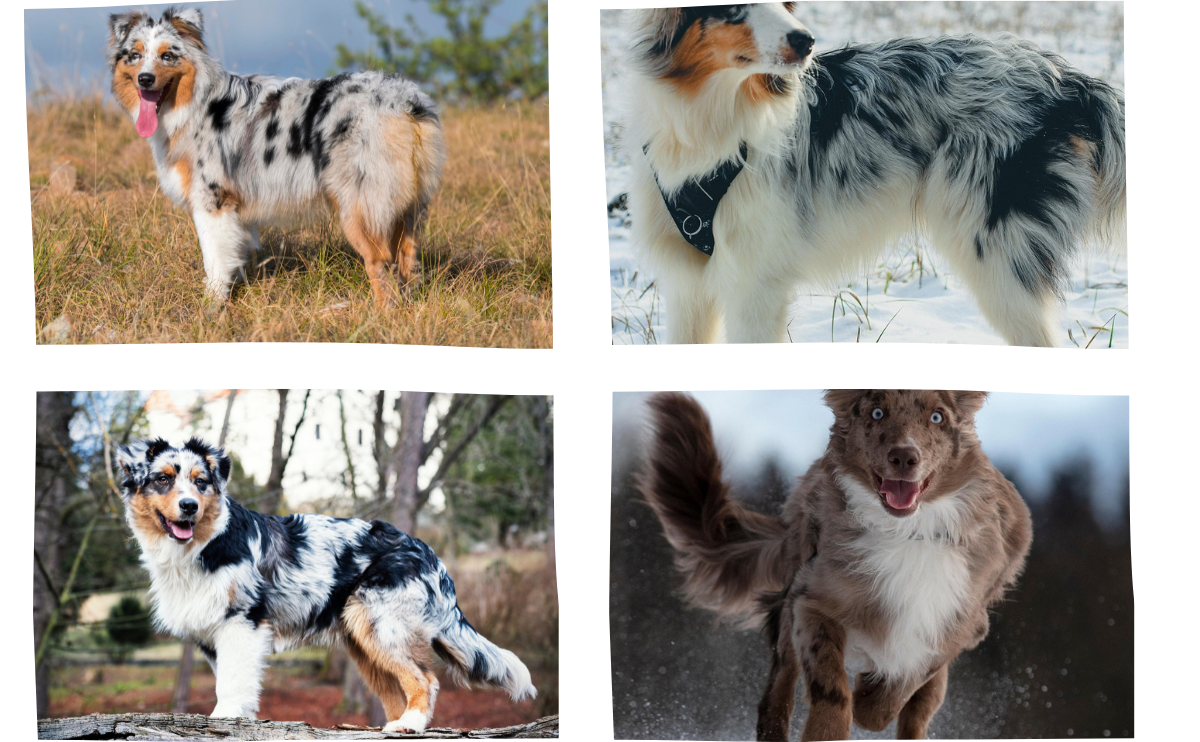
Meet the Gene That Snipped the Tail
The best-known cause of this trait is a small DNA change in the T-box transcription factor T gene, often labeled C189G. This mutation affects how the tail’s vertebrae grow and fuse before birth.
Here’s the short version:
- The mutation acts in an autosomal dominant way — one copy is enough to shorten the tail.
- Dogs with two copies (one from each parent — called homozygous) rarely survive, a condition known as embryonic lethality.
- The mutation shows up in about 17–21 breeds, while other breeds likely carry different bobtail genes that science hasn’t identified yet.
Studies have found that when two heterozygous carriers (possessing one normal and one affected T gene) were bred, this produced 25% homozygous affected offspring, thus a 25% reduction in litter size.
Born Short, Not Cut Short: The Truth About Bobtails vs. Docking
It’s easy to confuse a natural bobtail with a docked tail, but they couldn’t be more different.
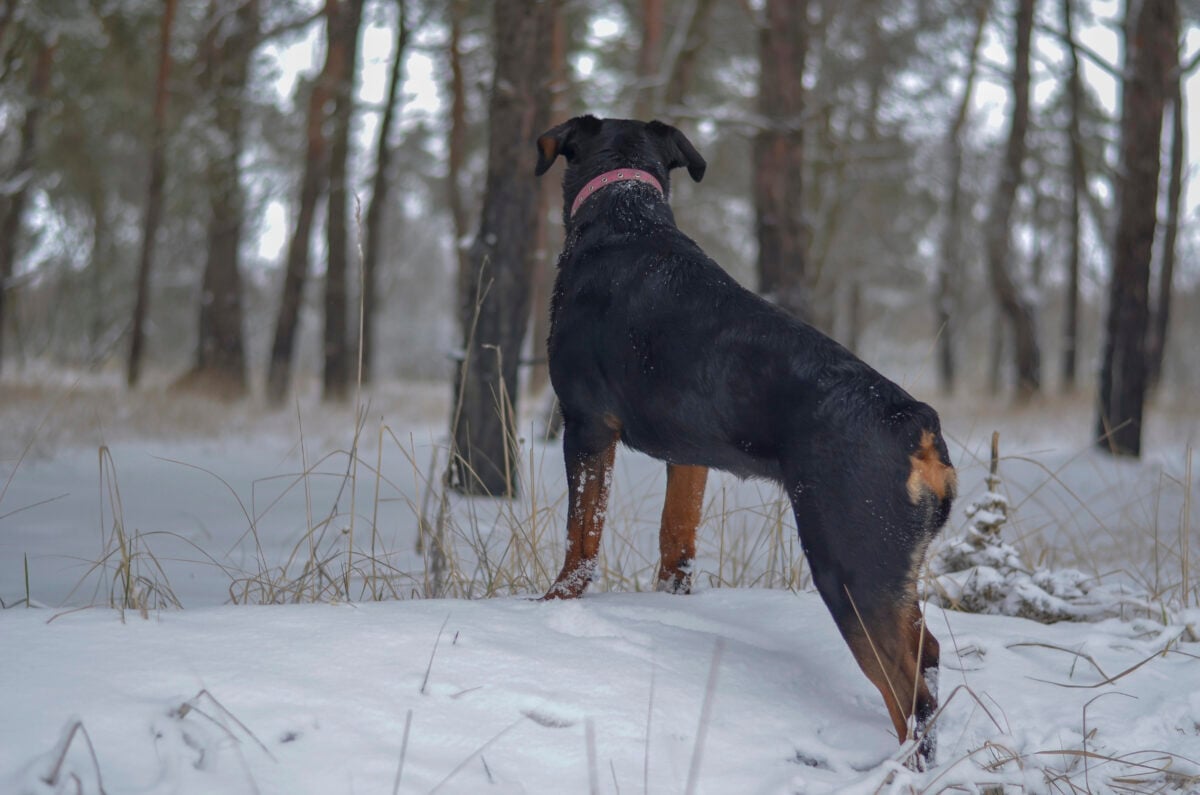
Photo by Gastello on Deposit Photos
A natural bobtail is simply part of a dog’s DNA — no surgery, no scars, and no interference with nerve or bone development.
By contrast, tail docking is a surgical procedure performed on puppies just days after birth. It’s typically done for cosmetic or traditional reasons (e.g., breed standards), not medical necessity.
Many veterinary experts and organizations like the American Veterinary Medical Association consider routine docking painful, risky, and unnecessary.
Did You Know?
Breeds requiring American Kennel Club tail docking to meet breed standards (as show dogs) include Doberman Pinschers, Miniature Schnauzers, Poodles, Rottweilers, etc., along with many hunting breeds like German Shorthaired Pointers and Vizslas.
The length of docking varies by breed and is often done for aesthetic purposes or to prevent injuries in working dogs.
Health-wise, most naturally bobtailed dogs live completely normal, healthy lives. The only concern arises in breeding programs, where mating two bobtail carriers can result in fewer viable puppies or developmental issues, like severe spinal cord defects.
Otherwise, naturally bobtailed dogs are as sturdy and expressive as any — they just don’t need a tail to prove it.
What About Dogs With Screw Tails?
Not all short tails are created equal. Some dogs have what’s known as a “screw tail.” A screw tail looks tightly curled, corkscrew-shaped, or kinked.
But this isn’t the same as the natural bobtail caused by the T-box gene mutation. Instead, it’s the result of vertebral malformations, where the small bones (vertebrae) in the tail are fused or misshapen during development.
According to genetic research, this tail type is linked to a mutation in the Dishevelled 2 (DVL2) gene. The DVL2 mutation affects how the spine forms, which can shorten and twist the tail, but it’s also associated with other skeletal abnormalities in extreme cases.
While it gives breeds like Bulldogs their iconic look, the DVL2 gene also contributes to brachycephaly (flat faces) and spinal deformities such as hemivertebrae, which is why responsible breeding practices aim to avoid exaggeration.
That’s why experts emphasize that screw tails aren’t the same as bobtails. Still, for many dogs, that little corkscrew is part of their unmistakable charm.
9 Popular Breeds Of Dogs With Short Tails
These breeds are among the best-known examples of stumpy-tailed dog breeds who come into the world with a built-in short (or no) tail. From working dogs to family favorites, each one carries its own version of the T-box gene mutation (or another tail-shortening twist of nature).
Australian Cattle Dog
A tough, intelligent herder bred for the rugged Australian outback, the Australian Cattle Dog (often called the Blue Heeler) is as durable as they come. Many are born with a natural stumpy tail, though some lines produce full-tailed pups as well.
This breed thrives on mental stimulation, hard work, and loyalty — a mix that makes them both formidable workers and deeply devoted family dogs.
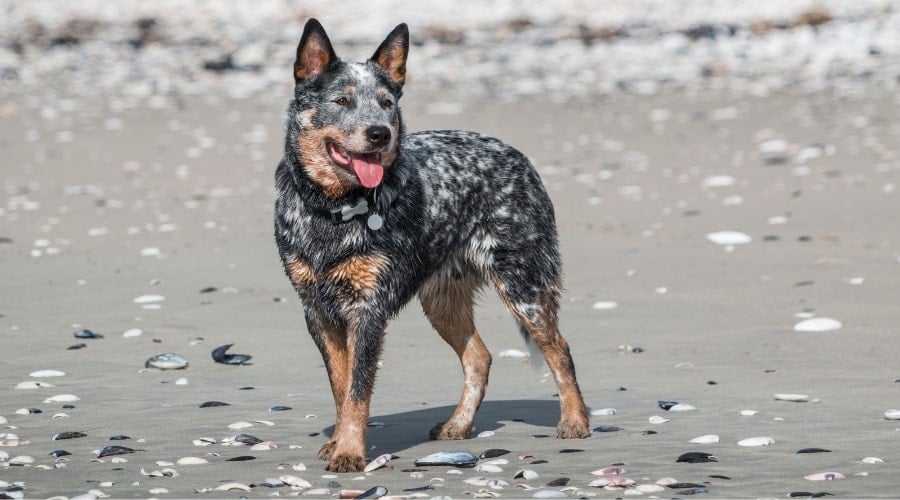
- Size: Medium; 35–50 pounds
- Temperament: Alert, energetic, fiercely loyal
- Cause of Stumpy Tail: T-box gene (C189G) variant — natural bobtail common in some lines
- Why You’ll Love Them: Equal parts brain and brawn. They’re protective, affectionate, and happiest with a job to do, even if it’s herding kids instead of cattle.
Australian Shepherd
The Australian Shepherd might sound like it hails from Down Under, but this energetic herder actually developed in the American West. Known for their intelligence, agility, and piercing gaze, Aussies are famous for their beautiful coats and their naturally short or bobbed tails.
Many are born with a partial tail, though some have longer ones. In the early days, ranchers preferred short tails to avoid injuries while herding livestock, but the modern Aussie’s bobtail is mostly a gift of genetics.
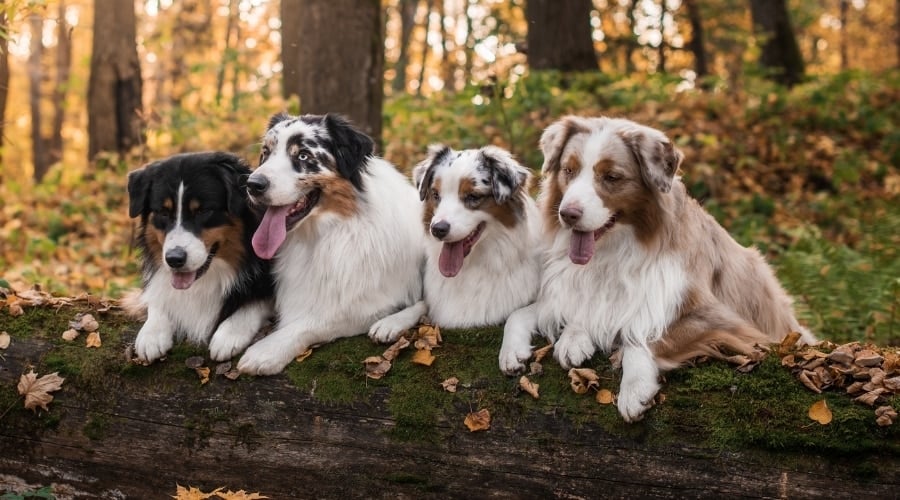
- Size: Medium; 40–65 pounds
- Temperament: Smart, energetic, affectionate with family
- Cause of Stumpy Tail: T-box gene (C189G) variant — natural bobtail common in the breed
- Why You’ll Love Them: They’re loyal, eager-to-please, and always ready for action. Whether it’s agility, obedience, or farm life, this dog leads a fun, active life.
Boston Terrier
Nicknamed the “American Gentleman,” the Boston Terrier pairs a tuxedo coat with a compact, muscular frame — and often, a naturally short tail. Their signature corkscrew or nub tail comes from their genetics, not docking.
What really sets them apart, though, is their cheerful personality and love of people. Boston Terriers are adaptable, social, and equally happy tagging along for errands or curling up on the couch.
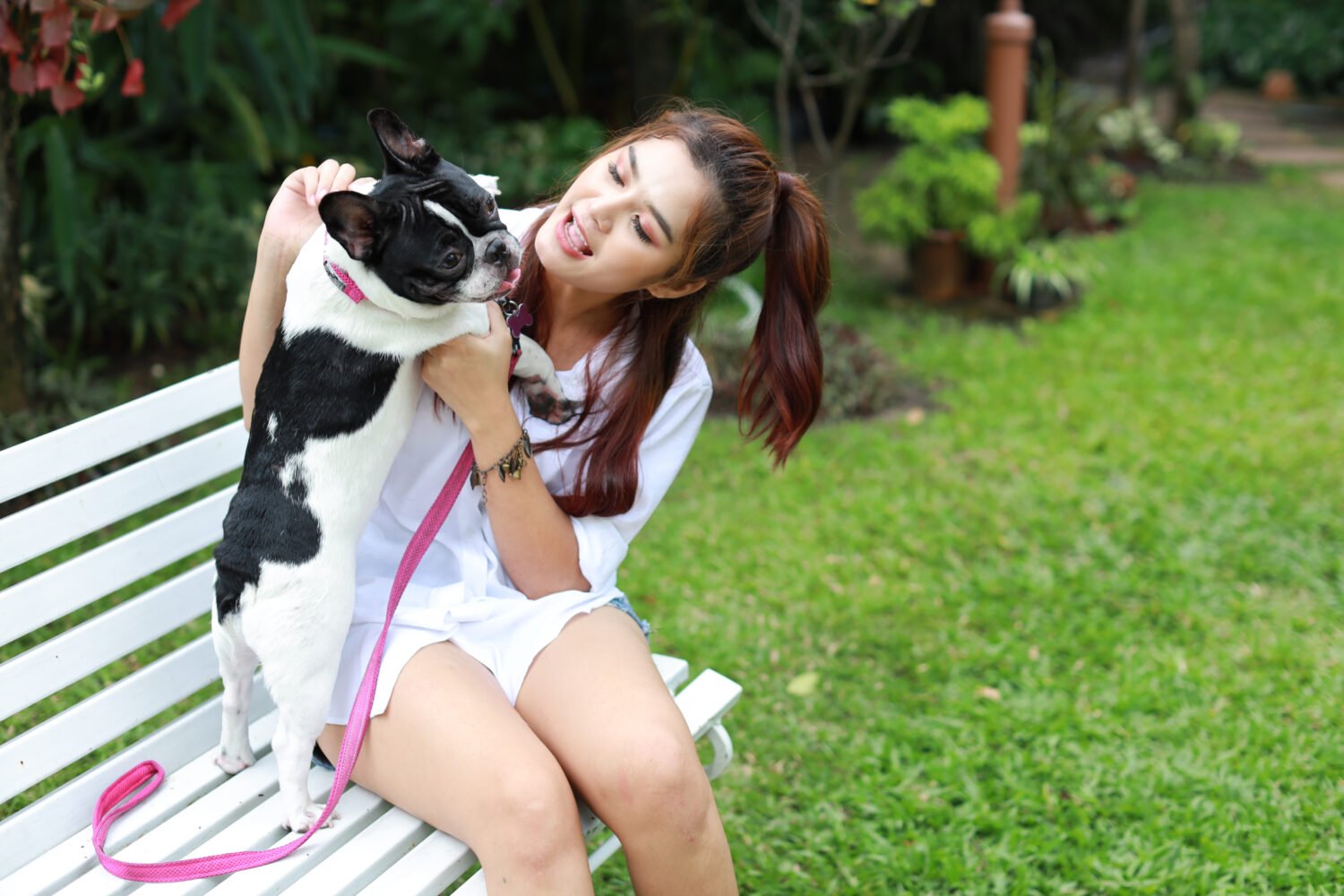
- Size: Small; 12–25 pounds
- Temperament: Friendly, lively, adaptable
- Cause of Stumpy Tail: Short tail due to screw-tail gene variation (not T-box)
- Why You’ll Love Them: Full of personality and heart, they bring big-dog confidence in a small, city-friendly package.
Brittany
The Brittany (formerly Brittany Spaniel) is a bird dog with bounce. Bred for field work and companionship, this breed’s short tail helps prevent snags while hunting through brush.
Some Brittanys are born with nub tails, while others have longer tails that naturally stay short in appearance. Their boundless enthusiasm makes them a favorite among active families and outdoor lovers alike.
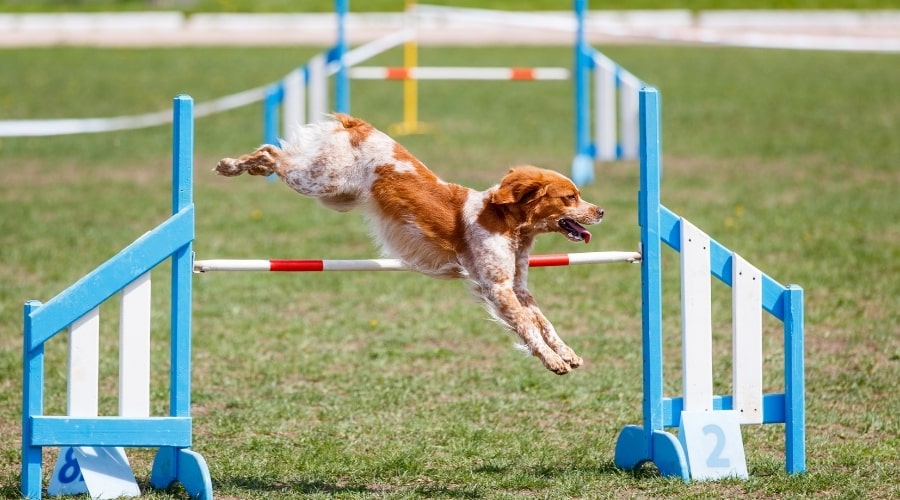
- Size: Medium; 30–40 pounds
- Temperament: Cheerful, energetic, people-oriented
- Cause of Stumpy Tail: T-box gene variant (natural bobtail common)
- Why You’ll Love Them: They’re the ultimate adventure buddy — energetic, affectionate, and always game for one more round of fetch.
English Bulldog
Few breeds have such unmistakable swagger. The English Bulldog sports a naturally short, screw-shaped tail, thanks to vertebral fusion, not docking.
Beyond their iconic look, Bulldogs are gentle, loyal, and affectionate companions who adore family life and don’t require much activity. Their easygoing nature makes them an ideal fit for apartment living or lazy Sundays on the couch.
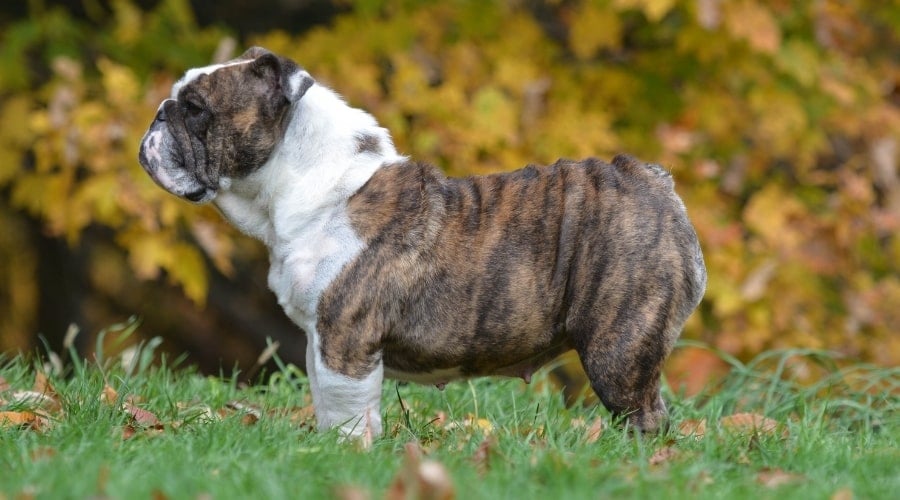
- Size: Medium; 40–60 pounds
- Temperament: Calm, gentle, loyal
- Cause of Stumpy Tail: Vertebral fusion (screw-tail formation, not T-box)
- Why You’ll Love Them: Their laid-back charm and affectionate snorts win everyone over.
French Bulldog
Compact, clownish, and full of charm, the French Bulldog has a naturally short, straight, or corkscrew tail. No docking needed — it’s all in the genes.
What truly makes the Frenchie irresistible is its huge personality in a small package. They’re playful, deeply loyal, and thrive on companionship, making them one of the most popular breeds in the world and the most popular breed in the U.S.
- Size: Small; 20-28 pounds
- Temperament: Playful, affectionate, easygoing
- Cause of Stumpy Tail: Screw-tail genetic variant (not T-box)
- Why You’ll Love Them: Their expressive eyes and lovable quirks make them the ultimate low-maintenance companion for city life.
Jack Russell Terrier
Small in size but huge in energy, the Jack Russell Terrier was bred for fox hunting, and they still act like they’ve got an important job to do. While some have been docked historically, others are born with naturally short tails.
They’re brilliant problem-solvers with a fearless spirit and thrive in homes that match their boundless energy. Expect a mix of intelligence, mischief, and loyalty rolled into one pint-sized powerhouse.
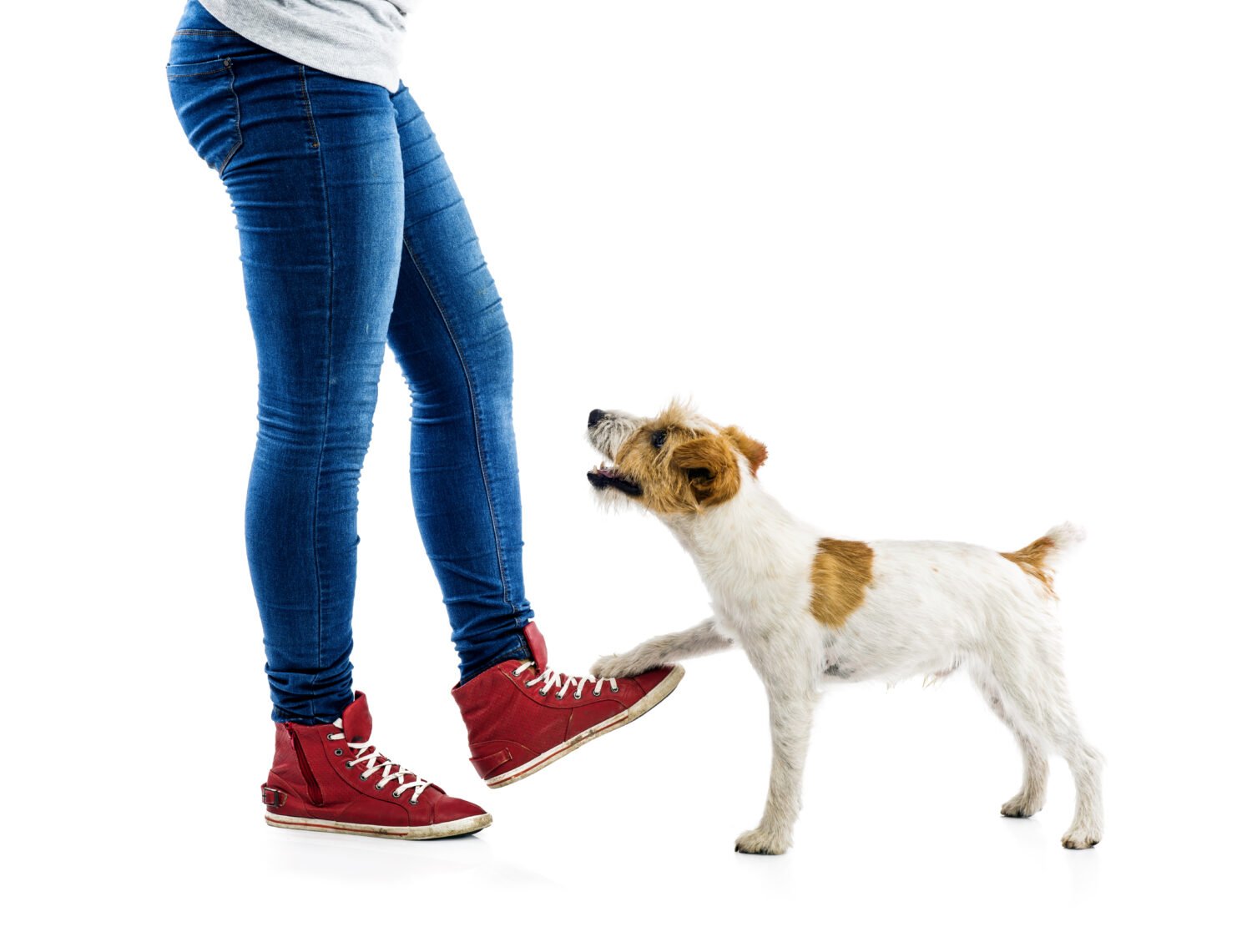
- Size: Small; 13–17 pounds
- Temperament: Energetic, fearless, clever
- Cause of Stumpy Tail: T-box gene variant (natural bobtail seen in some lines)
- Why You’ll Love Them: Their bold personality and endless enthusiasm make them fun, mischievous, and always entertaining.
Parson Russell Terrier
Closely related to the Jack Russell, the Parson Russell Terrier was bred for agility, courage, and precision in the field. Some are naturally bobtailed, though the look was once achieved through docking.
They’re quick thinkers and high-energy companions who love to chase, dig, and play. Expect a dog that’s as clever as it is determined, with a big heart behind that small frame.
- Size: Small; 13–17 pounds
- Temperament: Spirited, clever, outgoing
- Cause of Stumpy Tail: Natural bobtail occasionally present (unknown cause)
- Why You’ll Love Them: They’re brave, intelligent, and full of spark, bringing endless laughter and action to any home.
Pembroke Welsh Corgi
Royal favorite and social-media darling, the Pembroke Welsh Corgi often comes with a natural bobtail, though some still have full tails. The breed’s short tail once served a practical purpose, helping avoid injury while herding cattle. Today, it’s simply part of their iconic charm.
Corgis may be short, but their personalities are larger than life. Known for their herding smarts and devotion, they balance independence with a goofy sense of humor that keeps families laughing.

- Size: Small-to-medium; 25–30 pounds
- Temperament: Loyal, affectionate, bold
- Cause of Stumpy Tail: T-box gene (C189G) variant — natural bobtail common
- Why You’ll Love Them: Smart, sassy, and irresistibly cute. Their short legs and shorter tails make them all personality from nose to nub.
9 Lesser-Known Stumpy Tail Dog Breeds
Beyond the household names, a handful of lesser-known breeds also come with naturally short tails, each shaped by geography, genetics, and purpose.
These under-the-radar dogs might not make the spotlight often, but they’ve earned loyal followings in their home countries. From rugged farm helpers to ancient herders, these dogs with short tails prove that bobbed beauty comes in all shapes and sizes.
Australian Stumpy Tail Cattle Dog
Think of this breed as the Aussie Cattle Dog’s wild cousin — leaner, leggier, and almost always born with a true stumpy tail.
Developed in the 19th century from European herding dogs and native Dingoes, the Australian Stumpy Tail Cattle Dog was bred for endurance, intelligence, and independence. They’re deeply loyal, happiest with wide-open spaces and a job to do.
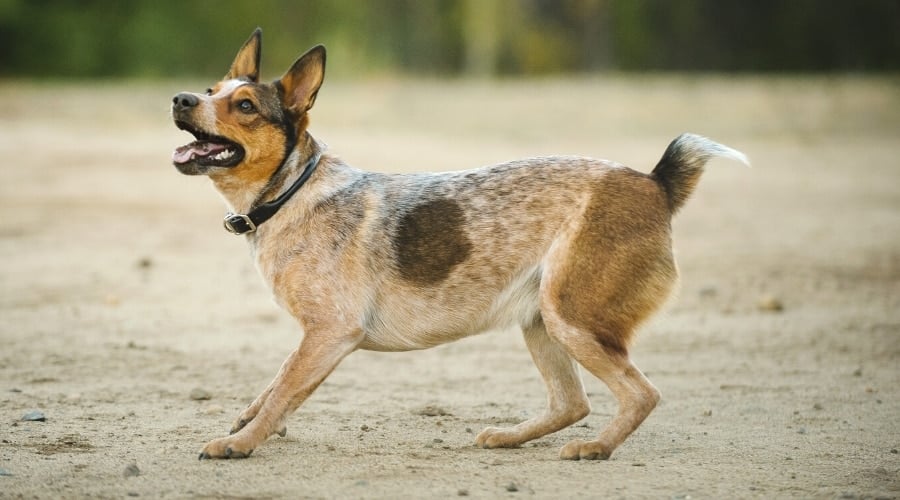
- Size: Medium; 35–45 pounds
- Temperament: Confident, intelligent, loyal to family
- Cause of Stumpy Tail: T-box gene (C189G) variant — natural bobtail
- Why You’ll Love Them: Tough as nails and deeply bonded to their people. They’re true-blue working dogs who live to move.
Braque du Bourbonnais
The Braque du Bourbonnais is a rare French pointer with a natural bobtail and a refined sense of purpose. Originally bred for hunting quail and partridge, its short tail helped it move easily through thick brush without injury.
Loyal, gentle, and people-oriented, they make calm house companions when not in the field.
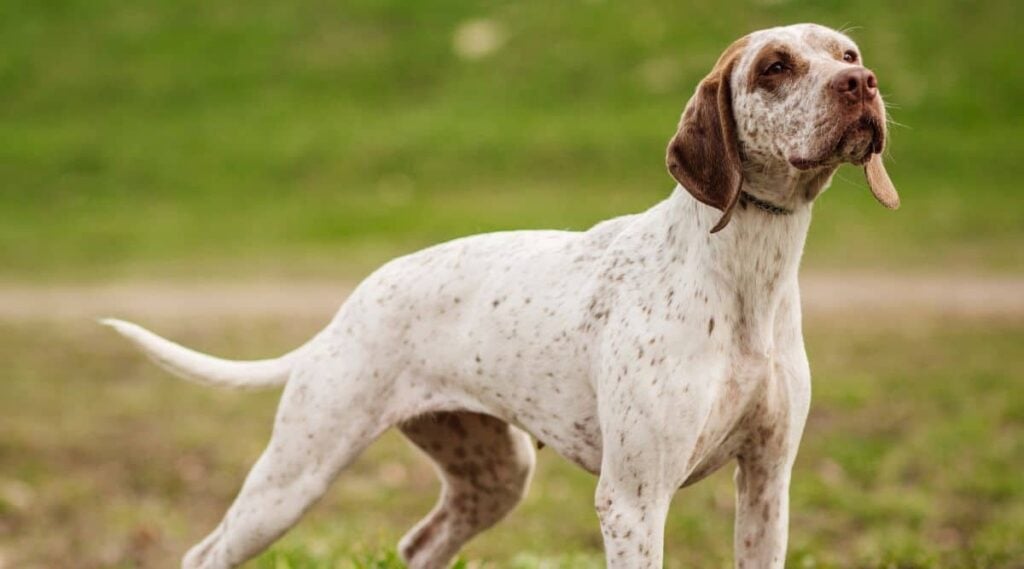
- Size: Medium; 35–55 pounds
- Temperament: Gentle, obedient, people-oriented
- Cause of Stumpy Tail: T-box gene variant — natural bobtail seen in some lines
- Why You’ll Love Them: Calm, graceful, and built for both family life and the field. They’re hunters with heart.
Brazilian Terrier
Brazil’s native terrier is a nimble, high-energy companion with a sharp mind and a short, natural tail.
The Brazilian Terrier was bred for catching pests and protecting property, and it brings that same spirited alertness to family life. They’re affectionate but lively — a little dog with big opinions and endless charm.
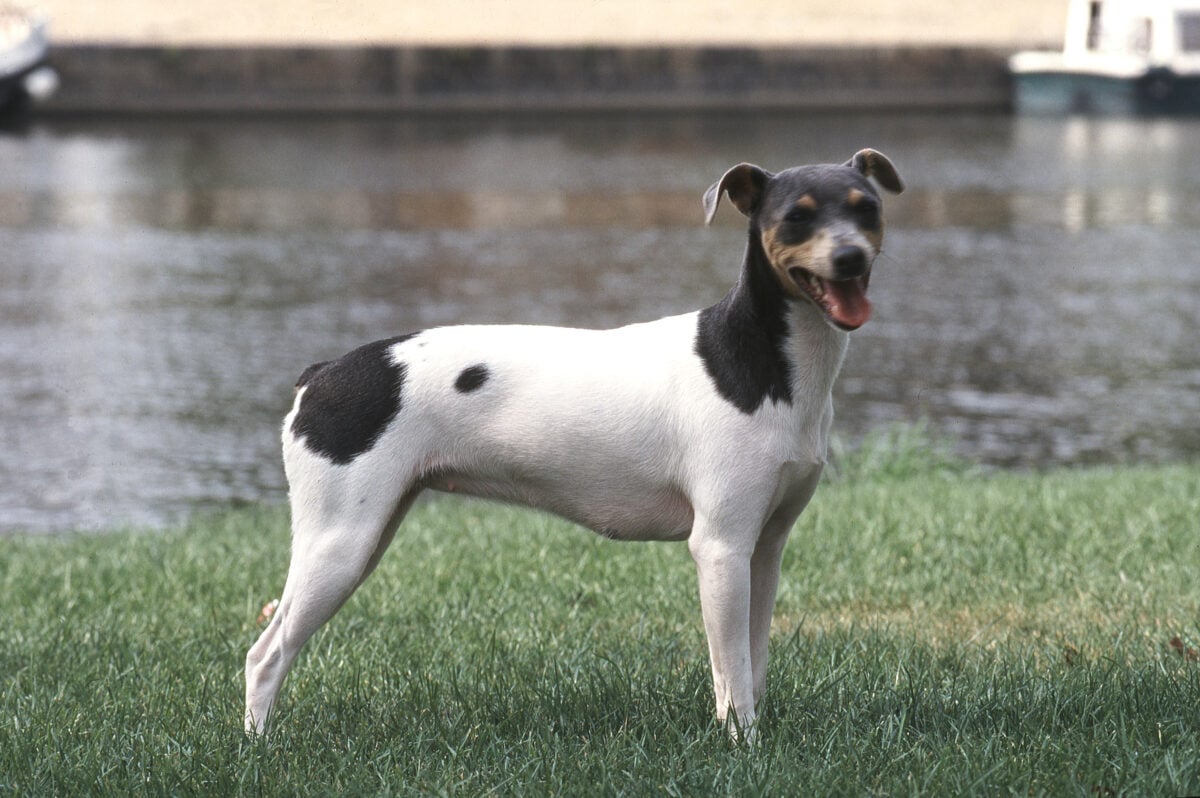
- Size: Small; 15–20 pounds
- Temperament: Energetic, intelligent, lively
- Cause of Stumpy Tail: T-box gene (C189G) variant
- Why You’ll Love Them: They’re spunky, loyal, and bursting with personality — a tropical twist on the classic terrier.
Catahoula Leopard Dog
Louisiana’s state dog, the Catahoula Leopard Dog, stands out for its marbled coat, and, in some cases, a naturally short tail.
Catahoulas were bred for tracking and herding in swamps and forests, and they’re just as hardworking today. Intelligent and loyal, they form deep bonds and make incredible watchdogs for experienced owners.
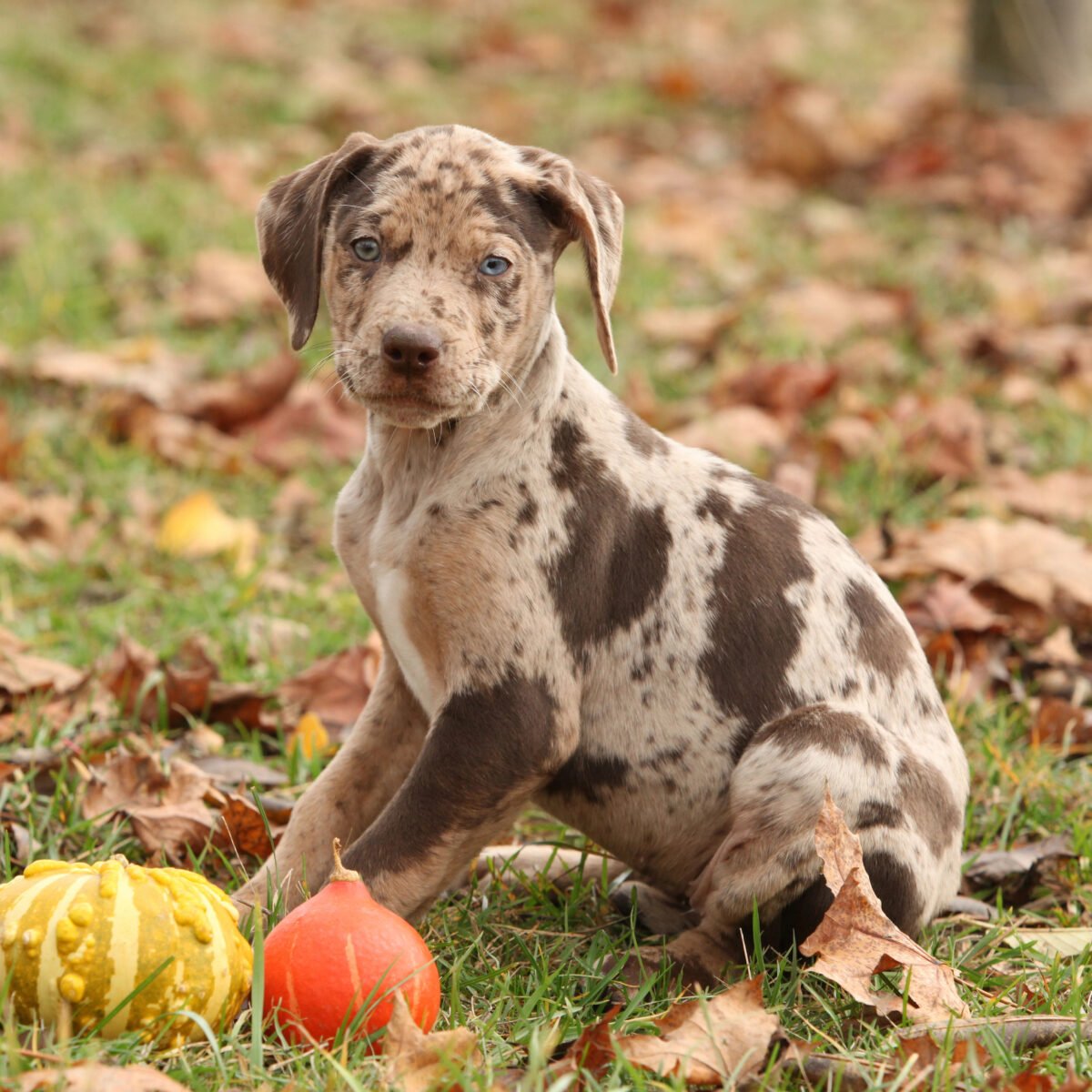
- Size: Medium-to-large; 50–95 pounds
- Temperament: Intelligent, independent, protective
- Cause of Stumpy Tail: T-box gene (C189G) variant
- Why You’ll Love Them: They’re bold, loyal working dogs with a mysterious streak — a true Southern original.
Mudi
The Mudi is Hungary’s curly-coated herder — a rare, intelligent breed known for its boundless energy and occasional natural bobtail.
These dogs are versatile workers that excel at agility, obedience, and even search and rescue. A little less known outside of Europe, the Mudi is a hidden gem for experienced, active owners.
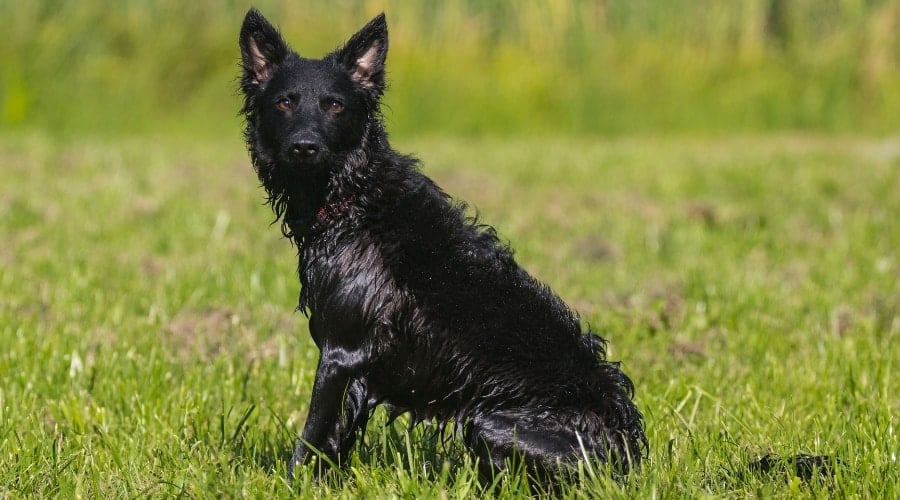
- Size: Medium; 18–30 pounds
- Temperament: Alert, agile, quick-learning
- Cause of Stumpy Tail: T-box gene (C189G) variant — present in some lines
- Why You’ll Love Them: A mix of brains, bravery, and bounce, the Mudi thrives on activity and human connection.
Pyrenean Shepherd
The Pyrenean Shepherd is a small herding dog with endless energy and heart. Originating in the French mountains, it was bred to guide flocks alongside larger guardian breeds, and some are naturally born with short tails.
They’re intelligent, loyal, and deeply affectionate with their families, making them a great match for owners who love to train and explore.
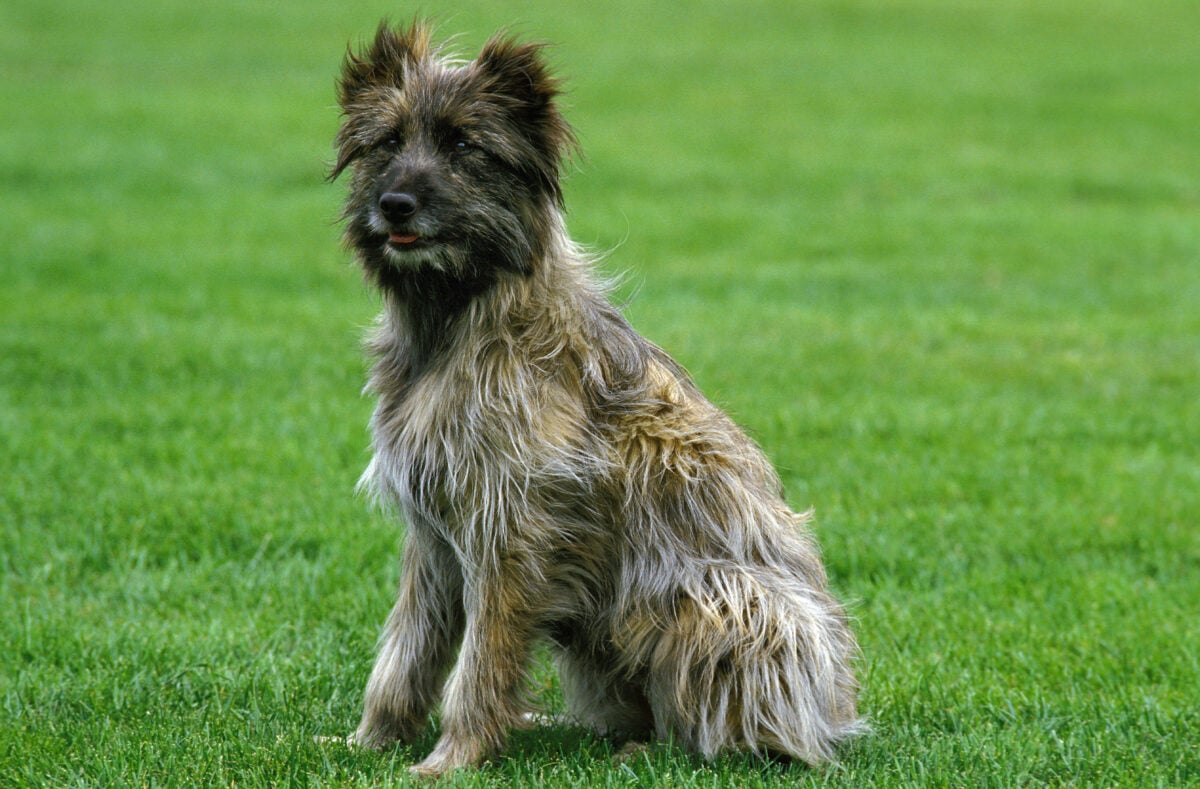
- Size: Small-to-medium; 15–30 pounds
- Temperament: Spirited, loyal, intensely devoted
- Cause of Stumpy Tail: T-box gene (C189G) variant
- Why You’ll Love Them: They’re quick thinkers with boundless hearts, perfect for active owners who love adventure.
Schipperke
The Schipperke may look like a miniature black fox, but its tail — or lack thereof — is all genetics. Many are born tailless or with a tiny nub, though a few still have longer tails.
Bold, curious, and loyal, Schipperkes are famous for their watchdog instincts and big personalities. They’re small dogs who act like they run the world.
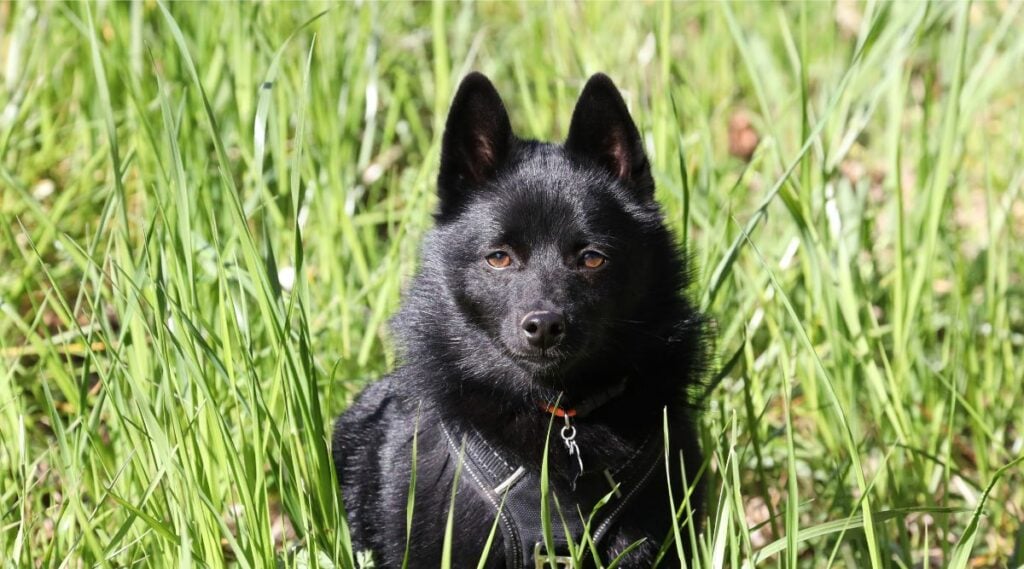
- Size: Small; 10–16 pounds
- Temperament: Bold, curious, fearless
- Cause of Stumpy Tail: T-box gene (C189G) variant
- Why You’ll Love Them: They’re tiny watchdogs with huge personalities, loyal to a fault and always on alert.
Spanish Water Dog
The Spanish Water Dog is as hardworking as it is lovable. Originally bred for herding, retrieving, and water work, many are born with natural bobtails that match their rugged, curly coats.
They’re highly intelligent, social, and thrive on both mental and physical challenges. This is a breed that bonds deeply and loves to have a purpose.
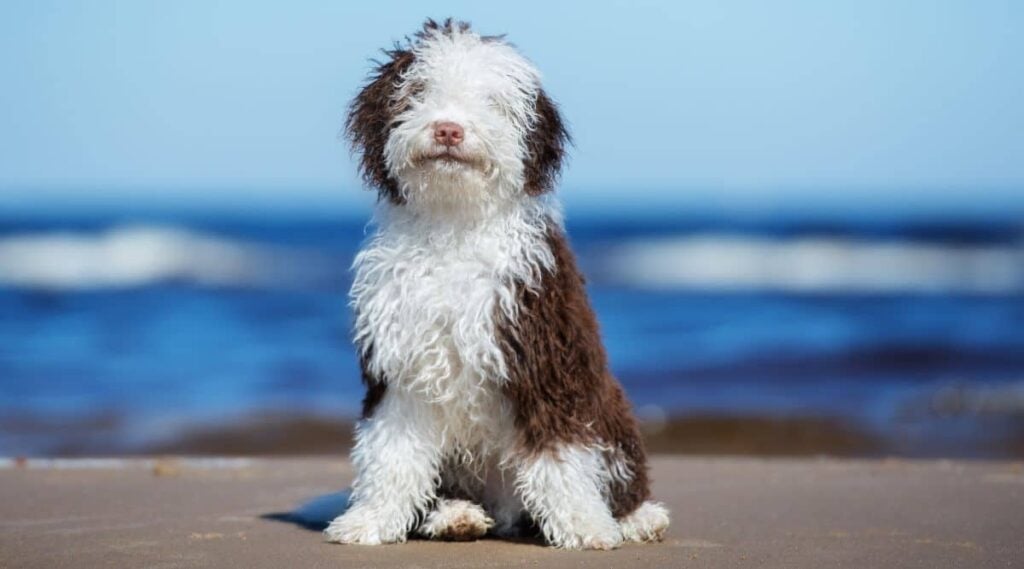
- Size: Medium; 30–50 pounds
- Temperament: Energetic, loyal, hardworking
- Cause of Stumpy Tail: T-box gene (C189G) variant
- Why You’ll Love Them: Athletic, affectionate, and always eager to help, they’re as loyal as they are lively.
Swedish Vallhund
Ancient and adorable, the Swedish Vallhund has been herding cattle for over a thousand years — some even call it the “Viking Corgi.”
Their tails range from long to stubby, but their personalities are uniformly delightful. Bright, bold, and endlessly cheerful, they’re one of Scandinavia’s best-kept secrets.
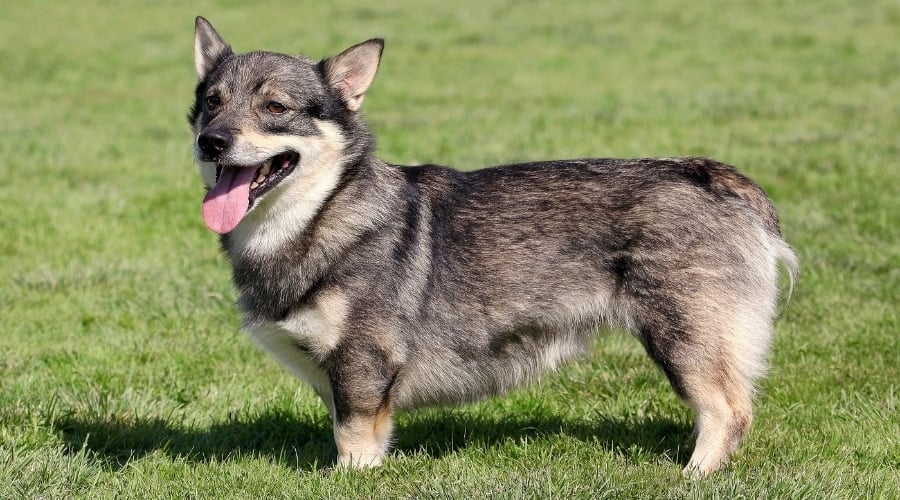
- Size: Small-to-medium; 20–35 pounds
- Temperament: Friendly, confident, energetic
- Cause of Stumpy Tail: T-box gene (C189G) variant — natural bobtail common
- Why You’ll Love Them: Loyal, clever, and endlessly cheerful, they pack a full-sized heart into a short-tailed frame.
Other rare breeds that are known to carry the T-box gene mutation include the Austrian Pinscher, Croatian Sheepdog, Danish-Swedish Farmdog, Karelian Bear Dog, McNab, Polish Lowland Sheepdog, and Savoy Sheepdog.
Best For: Which Stumpy Tail Dog Breed Fits Your Life?
Each of these stumpy-tailed dog breeds brings something special to the table — from adventure-ready herders to pint-sized comedians. Here’s how to find your perfect match.
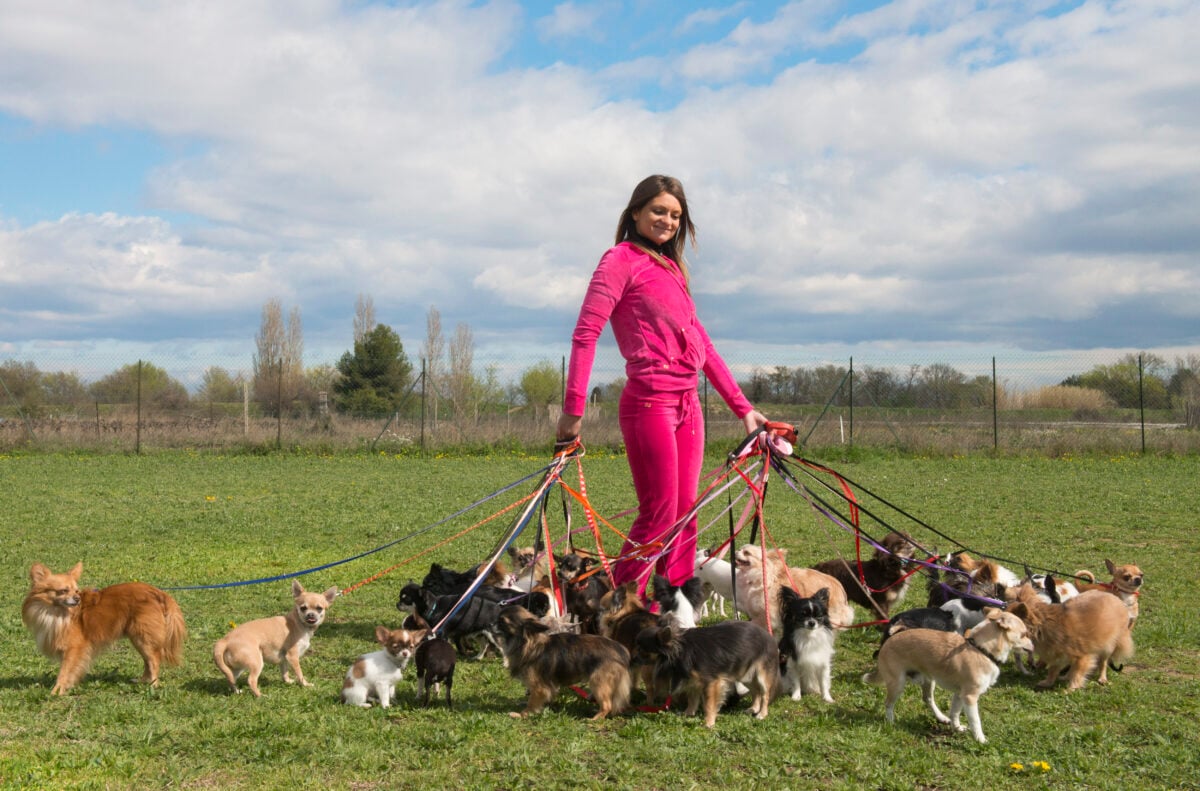
Apartments & Small Spaces
If you’re short on space but not on love, small-tailed breeds fit the bill beautifully. Try the French Bulldog, Boston Terrier, or Schipperke — all thrive indoors and bring big personalities to compact living.
First-Time Owners
Looking for loyalty without the chaos? Start with the Boston Terrier or French Bulldog — both easygoing, adaptable, and low-maintenance. The English Bulldog also shines as a trainable, cheerful companion.
Active Owners
For those who live life in motion, some stumpy-tailed dogs can run, hike, and herd right beside you.
Top picks include the Australian Shepherd, Brittany, Mudi, and Australian Cattle Dog — all thrive on activity and need plenty of mental and physical challenges to stay happy.
Protection & Watchdogs
Need a vigilant pup who’ll alert you before anyone reaches the door? The Australian Cattle Dog, Catahoula Leopard Dog, and Schipperke combine sharp instincts with fierce devotion.
Unique Personalities
For owners who love something a little offbeat, these short-tailed charmers steal hearts: the Australian Stumpy Tail Cattle Dog, Mudi, and Swedish Vallhund. Each is intelligent, loyal, and brimming with character — the kind of dogs that turn heads and spark conversations.
Frequently Asked Questions
Curious about how these dogs without tails came to be — or what it means for their health? Here are the most common questions readers ask about stumpy tail dog breeds. If you don’t see yours here, ask us in the comments!
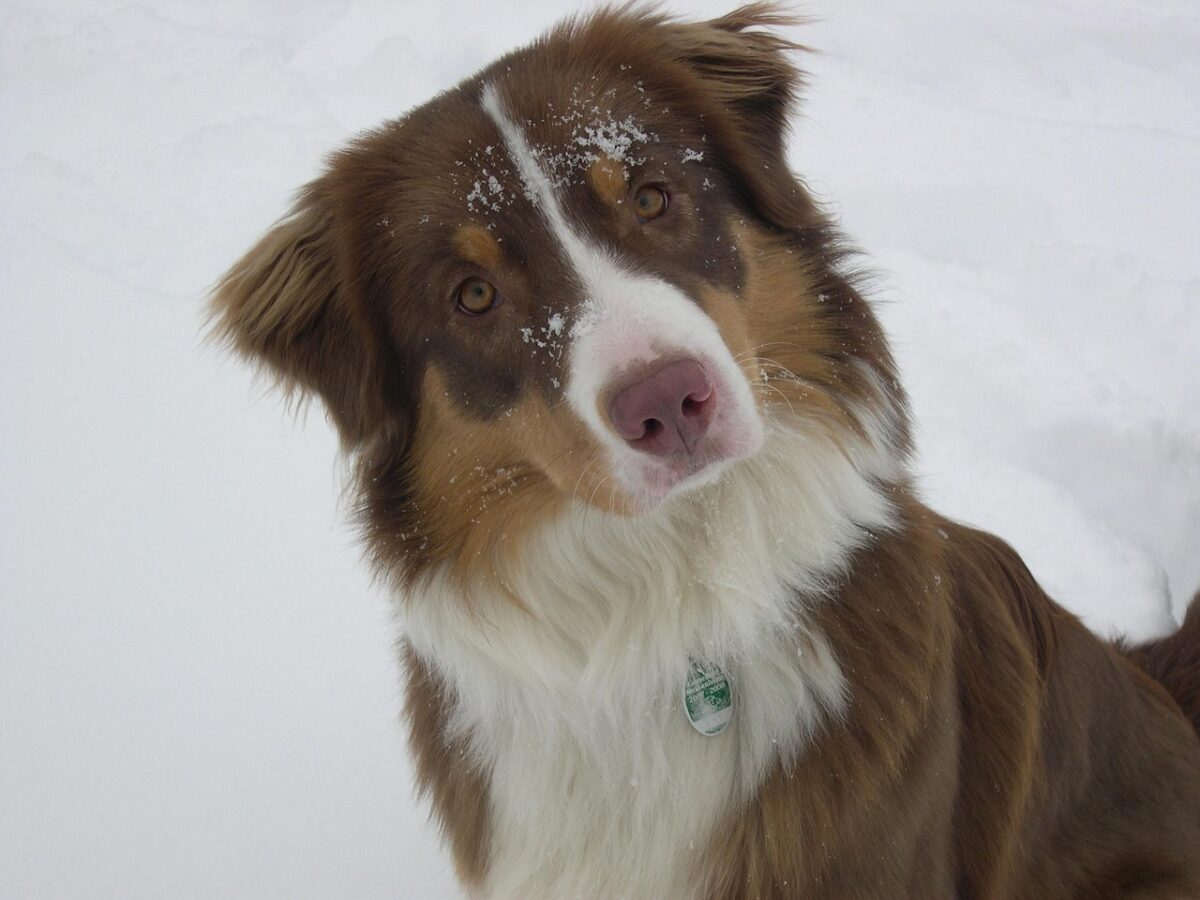
Are Stumpy-Tailed Dogs Born That Way?
Yes! Stumpy-tailed dogs are born with naturally short tails, thanks to a genetic mutation that limits tail growth before birth. It’s not a sign of injury or docking — they simply develop that way from the start.
Is a Stumpy Tail the Same as a Docked Tail?
Not at all. A stumpy (natural bobtail) forms on its own before the puppy is born, while a docked tail is surgically shortened after birth. The difference comes down to genetics vs. procedure, and only one of those is pain-free.
Are Dogs Without Tails Healthy?
For the most part, yes. Natural bobtails cause no harm and don’t affect a dog’s balance or mobility. The only concern is in breeding programs — pairing two bobtail carriers can reduce litter size due to embryo loss.
Which Gene Causes a Natural Bobtail?
Most bobtails trace back to a change in the T-box transcription factor T gene (C189G). This single mutation shortens the tail in breeds like the Australian Shepherd and Pembroke Welsh Corgi, though other breeds may carry different genes that produce the same look.
Do Stumpy Tail Dogs Still Wag?
Absolutely — they just wag with what they’ve got! Even a short or nearly invisible tail can move with excitement, and many dogs use their whole body to show emotion.
Is Tail Docking Still Legal?
It depends on where you live. Tail docking is banned or restricted in much of Europe, the U.K., and Australia, but still allowed in parts of the U.S. Veterinary groups in the U.S, like the AVMA, discourage cosmetic docking altogether.
Love Unique Dog Traits? Keep Exploring!
If you’re fascinated by dogs with fascinating characteristics, you’ll love diving into more of our breed-spotlight guides. Check out our list of the best companion dog breeds for pups that fit every personality, explore our guide to dog breeds that don’t bark if quiet companionship is your style, or meet the breeds best for allergies that bring big love without all the sneezing.
Would you ever adopt (or do you already own) a stumpy-tailed dog breed? Tell us your favorite(s) in the comments below!
